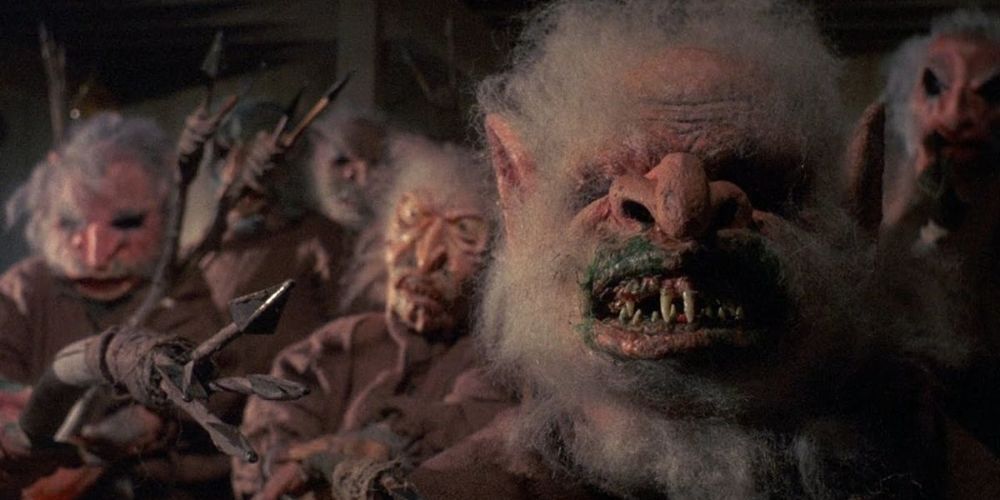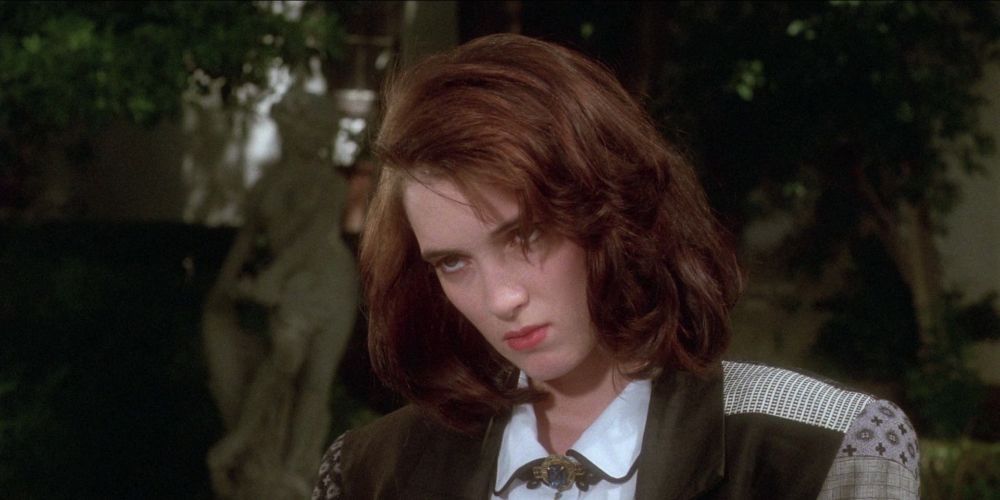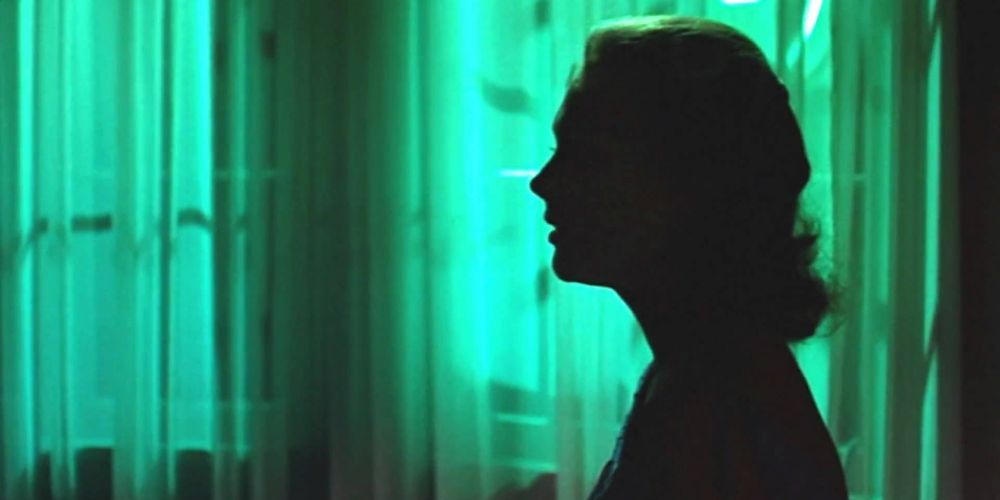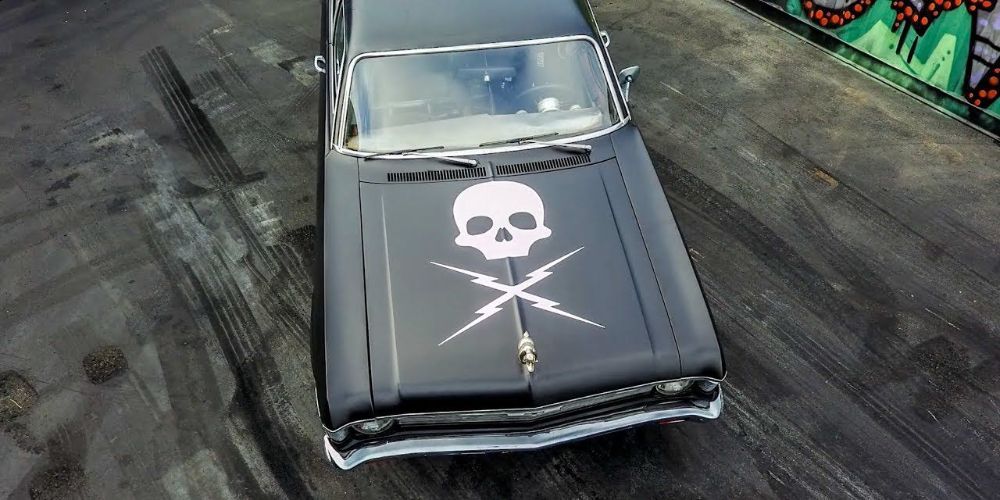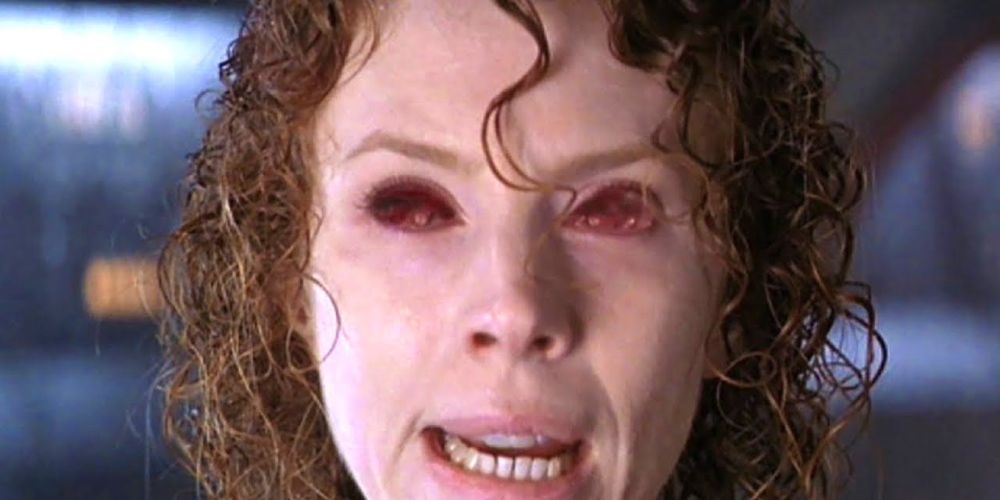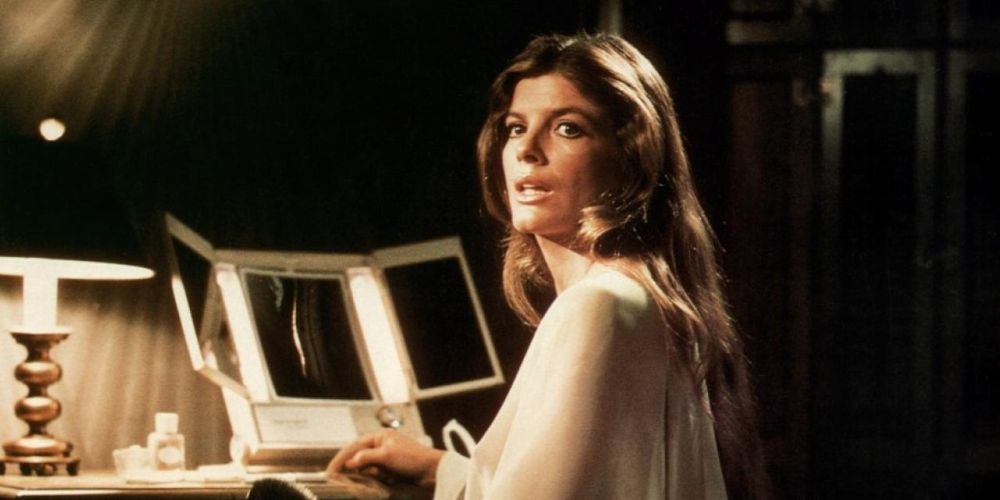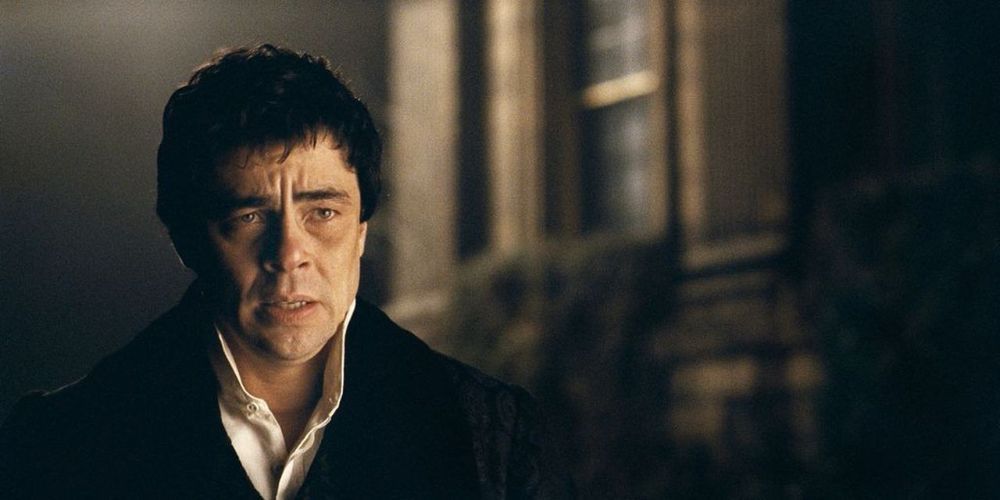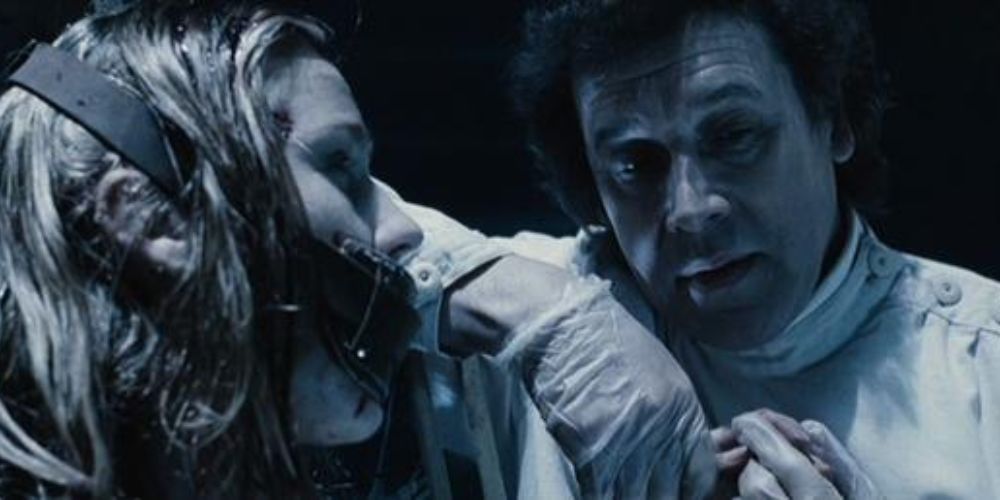Horror movies are typically lampooned by critics but tend to spawn immensely loyal fan bases. While some have deservedly earned critical scorn and an overall negative moniker through absurd plots, quirky dialogue, and laughable effects, they ended up becoming beloved by fans. Others originally bombed because they were released during a time when audiences were unwilling to embrace the advanced effects, plot, or theme of the film.
Both types of bombs often become cult classics. Cult classics have a devoted following, and while many are notorious examples of this bomb-to-cult phenomenon, a few films especially stand out from the crowd.
10 Two Aliens Compete At The Box Office And John Carpenter's The Thing Is Left Behind
In 1982, John Carpenter managed to craft what is now seen as a horror masterpiece, yet bafflingly The Thing's initial reception was overwhelmingly negative. Critics pulled no punches after viewing the blood-soaked cosmic extravaganza, as Rob Bottin's gory special effects were too much for the 80s, a time when E.T. was seen as the quintessential movie alien. On top of the reviews, the film earned an R rating, missing out on a wide swathe of potential younger moviegoers.
When The Thing was released in video format and shown on TV, audiences received the movie in a different light. Fans of both science fiction and horror understood the movie's brilliance and appreciate the otherworldly chaos caused by Carpenter's futuristic film.
9 Troll 2 Manages To Fail So Hard At Everything, It Is Just Plain Charming
Movies as ridiculously bad as Troll 2 have created an entire genre, and fans are falling hard for these baroque bombs. The plot has something to do with a witch's curse, ghostly grandpas, and goblins (not trolls) turning people into green sludge. The film was plagued by production issues, and the overall inexperience of the crew led it to become a box office bomb.However, Troll 2 is jammed with strangely quotable dialogue and ludicrous gore, and leaves fans captivated by the chaos of it all. Troll 2 has been dubbed "The Best Worst Movie Ever" by its loyal cult following.
8 Heathers Combines The Angst of High School With Mean Girls And A Cult Classic Is Born
Heathers helped spawn the teen movie genre when Winona Ryder and Christian Slater introduced audiences to dark topics that were socially faux pas at the time, exposing the rocky road of high school popularity. The film had a $3 million budget but did not recover even half of that during its original release.
But Heathers release to video was when audiences were able to appreciate its message. The theme of the movie has mostly withstood the test of time and earned a large cult following for boldly speaking up about issues that continue to plague teens today.
7 Poor Marketing Led To A Muddled Message From Jennifer's Body
Jennifer's Body is a sad case of a good film being butchered by poor marketing. Diablo Cody's script dealt with themes of the strength of female friendships and the over-sexualization of women. Marketing for the film, ironically, was what the film took aim at, portraying star Megan Fox with as few clothes as possible. The film failed to find an audience due to the muddled advertising, leading to a lethargic box office run.
A decade later, horror fans began to appreciate the message. The movie brought to light poignant problems women in Hollywood face, making sure that Jennifer's Body would always have a place on the horror cult classic list.
6 Alfred Hitchcock's Vertigo Was Too Innovative For Audiences In the 50s
Alfred Hitchock, the Master of Suspense and plot twists, released Vertigo in 1958. The movie pioneered many elements never seen in film prior. The unconventional plot bothered audiences and critics alike, leading it to become a box office bomb in Hitchcock's terms.
When it was re-released in 1984, audiences could not get enough of the movie's style, and Vertigo became one of the most influential movies in American film history. The camera's creation of vertigo for the audience, and Hitchcock's severe use of color, are still taught and analyzed by film school professors today.
5 Grindhouse, The Tarantino-Rodriguez Double Feature, Is Pulp Horror On An Epic Scale
Film greats Quentin Tarantino and Robert Rodriguez combined their movies Death Proof and Planet Terror in an attempt to pay homage to the 1970s grindhouse movie genre for a new generation of audiences. For whatever reason, audiences just weren't on board with the nostalgic double feature format, causing the film to fail at the box office, and theaters were forced to show the movies as two separate features.
Despite the movie's initial failure, Grindhouse gradually became a cult classic, as not only was the home video release a far more palatable viewing experience but also directors Tarantino and Rodriguez became seen as cult movie icons. The ambitious Grindhouse is now celebrated as a love letter to 70's horror.
4 Event Horizon's Blend Of Sci-Fi And The Supernatural Developed An Entirely New Sub-Genre
Event Horizon faced constant issues throughout production. Post-production for the film was cut from ten to four weeks, leaving a significant amount of gore on the cutting room floor after test screenings failed to satisfy audiences. Critics slammed the movie for its rushed pacing, oddly placed dialogue, and its jarring, uneven tone, causing the movie to crash and burn.
Event Horizon eventually made a significant comeback. The movie's blend of the supernatural and science fiction, paired with its oppressive atmosphere, led the way to the Lovecraftian horror craze that is a monumental part of horror today.
3 In The Midst Of The Women's Rights Movement, The Stepford Wives Could Not Survive
In 1972, Ira Levin's book, The Stepford Wives, was published, leading to Brian Forbes 1975 movie adaptation of the novel. The plot follows protagonist Joanna Eberhart and her family when they move to a small suburb in Stepford, Connecticut where life appeared too perfect. The women in town live their happy, subservient existence simply to please their male counterparts. But 1975 was the pinnacle of the women's rights movement, so the movie's release met with harsh criticism and protest.
Decades later, the use of shallow perfection to pacify the masses and lead them to destruction is a trope that many horror films continue to use. Even the term, "Stepford wife" found its way into history and is still used today to describe a passive, accommodating person.
2 In A Sea Of Mediocre Remakes, The Wolfman Left Audiences A Lot To Chew On
Joe Johnston agreed to direct the 2010 version of The Wolfman and was given a mere three weeks for preproduction. Universal Studios executives micromanaged the movie so much that interns were given more status than Johnston. The cast was stacked with Hollywood royalty, from Anthony Hopkins to Benicio del Toro, so that expectations reached Oscar heights but never quite made the mark.
But The Wolfman became a quick cult classic. While the plot is drastically different in Johnston's remake of the film, it remains true to the spirit of other Universal Monster movies, emphasizing special effects, Victorian settings, and relying heavily on the strength of the actors.
1 Feardotcom Flopped Its Way Into Film Failure History
Director William Malone was disappointed with the reviews of his previous film, House on Haunted Hill, and wanted to make a movie no one would forget; Feardotcom did just that. Feardotcom became one of only 22 movies to earn an "F" rating on CinemaScore. The movie had potential; however, the lack of structure, weird acting, and motion-sick-inducing camera shots created another critical failure.
While Feardotcom's revenue did not cover half of the film's outrageous $40 million budget, fans started to latch on to the bomb, creating a strong fan following. This movie is considered so terrible that it became an instant cult classic.


.jpg)
